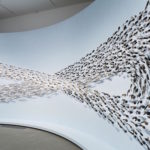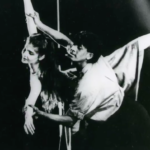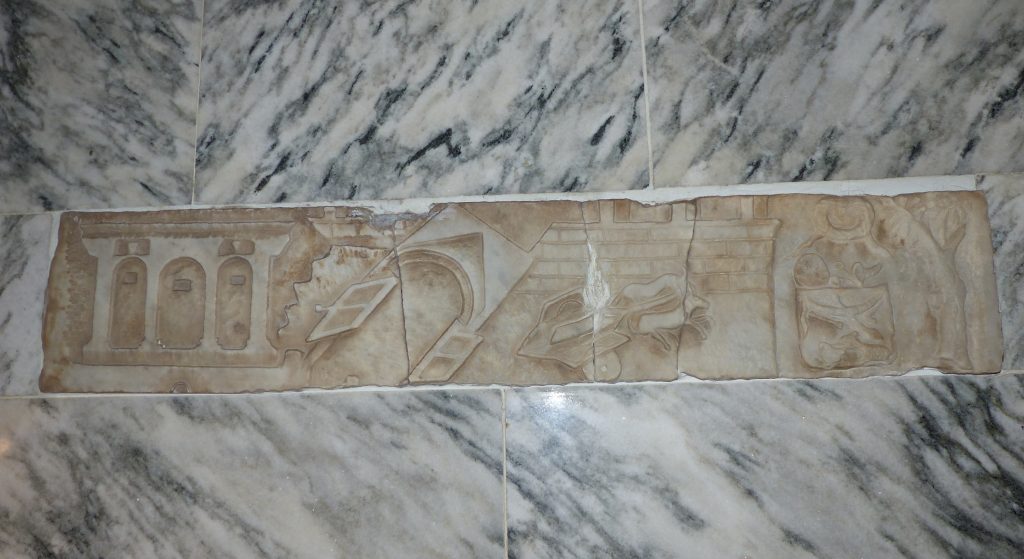In Search of a Certain Eden (Natura Negra series)
2019 - Photography (Photography)
111.76 x 139.7 cm
Chanell Stone
Natura Negra , which translates to “Black Nature”, is a black-and-white photographic series by Chanell Stone that explores the connection between the Black body and nature within man-made environments. The series features a compilation of environmental portraits staged in urban “forests” that explore the notion of “holding space” within one’s immediate environment. Each image depicts an effort to reclaim and reconnect with the earth, even in spaces of compartmentalized nature like backyard gardens, flora intended as urban beautification, and lush public spaces. The photograph In Search of a Certain Eden depicts the artist standing in a bed of blooming flowers in front of a school in Brooklyn, NYC. Unknown to the artist at the time, the flower is called a Plantation Lily, which blossoms once a year. This kind of serendipitous detail is common in Stone’s practice, as she often creates work spontaneously as she wanders through urban settings. For Stone, this series operates in the legacy of the Great Migration, which saw the movement of 6 million African Americans out of the rural Southern United States to the urban Northeast, Midwest, and West between 1916 and 1970 in an attempt to escape racist ideology, widespread lynching, and the subsequent limited econominc opportunties. When Black Americans fled the horrific conditions of the South during this time, and arrived in urban areas like Chicago and Los Angeles, they often left behind not only their economic and social bases, but also their connection to the land. Stone’s Natura Negra series functions as an argument for a rekindling and reawakening of this latent bond. Stone’s project reveals the inherent disconnection from nature that corresponds to the realities of urban life, but also suggests that cultivated urban spaces can act as rich—if more nuanced—sites for communing and (re)connecting with nature.
Chanell Stone’s practice explores what she describes as the “re-naturing” of the Black body to the American landscape—an act that aims to complicate and sublimate the history of American slavery into a reimagined relationship between African Americans and the earth. She describes growing up feeling that, as an African American, “this isn’t your land or it isn’t for you.” She remembers often hearing how America was built by immigrants, and while that may be one aspect of America’s history, Stone’s work demonstrates how crucial it is to acknowledge that America was also built by various slavery structures, and in particular, Black slaves, and Black Americans. The artist’s work challenges subtle and insidious forms of Black erasure such as the immigrant narrative. In response to such narratives, she has recently spent time examining this history with her family—looking through photo albums and listening to her grandmother’s memories. For Stone, it is a way for her to reclaim the narrative, and to piece together a fractured American history.
Colors:
Related works sharing similar palette

© » DIANE PERNET
Dutch Emerging: Ruben Janssen X GRA Fashion Bachelor 2023 – A Shaded View on Fashion From the back to the middle and around again — Ria’s wedding dress, Alan’s patterns and John’s model: ‘My project is an investigation into evolution, explored through prisms of biology, computation and a poetic personal narrative, shifting between timescales on an evolutionary timeline...

© » KADIST
Cally Spooner
2016The installation Self Tracking (the five stages of grief) was realized from a performance that is to be re-activated...

© » ARTS EQUATOR
Solid are the Winds: Aeolian Encounters at The 9th Asia Pacific Triennial (Part I) | ArtsEquator Thinking and Talking about Arts and Culture in Southeast Asia Articles Natasha Harth for QAGOMA untitled (giran) (2018), Jonathan Jones in collaboration with Dr Uncle Stan Grant Snr AM January 10, 2019 By Marcus Yee (1259 words, five-minute read) This is the first of a two-part essay on the 9th Asia Pacific Triennial running at the Queensland Art Gallery, Brisbane, Australia, from 24 November 2018 to 28 April 2019...

© » KADIST
Stan Douglas
1997Michigan Central Station is part of a larger photographic series, Detroit Photos , which includes images of houses, theaters, stadiums, offices, and other municipal structures...

© » KADIST
Reza Aramesh
2016The photographed plaster heads set against the idyllic landscapes of the south of England, subvert the process of image production and memory...

© » KADIST
Gregory Halpern
2016Gregory Halpern spent five years shooting ZZYZX , and another year editing the results, from an estimated thousand rolls of film, about half of which were shot in the final year after his Guggenheim Fellowship enabled him to live in California...

© » KADIST
John Gerrard
2016Flag (Thames) 2016 depicts a small section of the Thames River—one that is adjacent to the Palace of Westminster in London—as an algorithmic representation on an LED panel...

© » ARTS EQUATOR
Getting schooled on the arts (via The Star) | ArtsEquator Thinking and Talking about Arts and Culture in Southeast Asia Articles September 14, 2018 From surprise visits to schools, replacing white shoes with black, and referencing the Finnish education system as a possible one to emulate, the new Education Minister Dr Maszlee Malik has made waves with his fresh approach...

© » KADIST
Kitty Kraus
Composed of two rectilinear pieces of glass, this work is part of a series of sculptures started in 2006...

© » THE RE:ART
Installation art by Şakir Gökçebağ - The re:art Installation art by Şakir Gökçebağ The art of Şakir Gökçebağ plays with one’s perception of normality and challenges any prior convention or knowledge of how things were designed to function and how they exist in the order and logic of the everyday man-made world...

© » KADIST
Jonathan Monk
2003Untitled (rolled up) , is an abstract portrait of Owen Monk, the artist’s father and features an aluminum ring of 56.6 cm in diameter measuring 1.77 cm in circumference, the size of his father...









